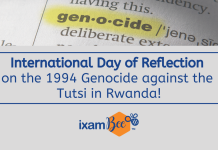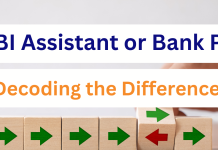NABARD Grade A is a highly coveted job conducted by the National Bank for agriculture and Rural Development (NABARD). The exam is competitive and requires candidates to be knowledgeable about various government schemes designed to benefit the rural population of India. These government schemes are not only important from an exam perspective but also in understanding rural development in India.
In this blog, we will discuss important government schemes relevant to NABARD Grade A and their benefits to the rural population.
Understanding Schemes for NABARD Grade A
Schemes play a pivotal role in the work of National Bank for Agriculture and Rural Development (NABARD). Understanding the various schemes is essential for aspirants preparing for NABARD Grade A exam. The schemes cover a wide range of sectors including agriculture, rural development, and financial inclusion. These schemes aim to provide financial support, promote sustainable development, and uplift the rural economy.
To understand the schemes, one must familiarize themselves with the objectives, eligibility criteria, and benefits provided by each scheme. In addition, learning about the implementation process and monitoring mechanisms will enhance one’s understanding of how these schemes function in practice. Gaining an in-depth knowledge of the schemes will greatly aid in preparing for the NABARD Grade A exam.
Pradhan Mantri Gram Sadak Yojana (PMGSY):
PMGSY is a scheme launched in 2000 aimed at providing connectivity to all unconnected habitations in rural areas. State governments in collaboration with the Ministry of Rural Development implement this scheme. The primary objective is to connect all unconnected habitations with all-weather roads.
Benefits:
- Improved Rural Connectivity: PMGSY has resulted in improved accessibility to educational and healthcare institutions, markets, and employment opportunities for rural communities. It has enhanced the overall socio-economic development of rural areas.
- Savings in Travel Time: The construction of roads under PMGSY has reduced travel time for people in rural areas, improving their efficiency and productivity.
- Boost to Rural Economy: The improved connectivity has facilitated the transportation of agricultural produce to markets, resulting in better market access and higher incomes for farmers.
Pradhan Mantri Awas Yojana (PMAY):
PMAY is a scheme aimed at providing affordable housing to all by 2022. It focuses on economically weaker sections (EWS), low-income groups (LIG), and middle-income groups (MIG). The Ministry of Housing and Urban Affairs leads this scheme, which is executed by state governments.
Benefits:
- Affordable Housing: PMAY provides financial assistance and subsidies on home loans, making housing affordable for low-income groups. This scheme enables them to have a roof over their heads and improve their living conditions.
- Employment Generation: The construction of houses under PMAY generates employment opportunities in the construction sector, contributing to economic growth in rural areas.
- Enhanced Quality of Life: Access to proper housing leads to an improvement in overall living conditions, sanitation, and health outcomes for rural populations.
Deen Dayal Upadhyaya Grameen Kaushalya Yojana (DDU-GKY):
DDU-GKY aims to provide skill training to rural youth, making them employable and self-reliant. The Ministry of Rural Development implements this scheme in collaboration with state governments.
Benefits:
- Skill Development: DDU-GKY equips rural youth with the necessary skills for various industries, increasing their employability and income-earning potential.
- Reduction in Unemployment: By providing skill training, DDU-GKY contributes to reducing rural unemployment rates by creating a skilled workforce.
- Sustainable Livelihoods: The training programs focus on sectors such as agriculture, construction, manufacturing, and services, enabling rural youth to secure sustainable livelihoods.
National Rural Livelihood Mission (NRLM):
NRLM is a scheme focused on reducing poverty in rural areas by empowering rural women and providing them with sustainable livelihood opportunities. The Ministry of Rural Development implements this scheme, with state governments executing its programs.
Benefits:
- Women Empowerment: NRLM aims to enhance the socio-economic status of rural women by providing them with access to credit, skill development, and entrepreneurial opportunities. It promotes their active participation in decision-making processes, leading to their empowerment.
- Poverty Alleviation: NRLM provides income-generating activities and resources to rural households, helping them overcome poverty and improve their standard of living.
- Social Inclusion: The scheme focuses on reaching out to marginalized and disadvantaged groups, ensuring social inclusion and reducing inequality in rural communities.
Swachh Bharat Abhiyan (SBA):
SBA is a scheme launched to make India clean and free from open defecation. The Ministry of Sanitation leads this scheme, which is executed by state governments.
Benefits:
- Improved Health and Hygiene: SBA focuses on the construction of household and institutional toilets, promoting better sanitation practices and reducing the risk of waterborne diseases in rural areas.
- Behavioral Change: The scheme aims to bring about a behavioral change in rural communities by promoting proper sanitation practices, the use of toilets, and the importance of cleanliness.
- Environmental Impact: SBA contributes to a cleaner environment by reducing open defecation, improving waste management, and promoting proper disposal of waste.
National Social Assistance Programme (NSAP):
NSAP aims to provide social assistance to the underprivileged sections of society, including the elderly, widows, and disabled individuals. The Ministry of Social Justice implements this scheme, with state governments executing its programs.
Benefits:
- Financial Support: NSAP provides financial assistance to vulnerable sections of society, helping them meet their basic needs and improve their quality of life.
- Social Security: The scheme ensures social security for the elderly, widows, and disabled individuals, providing them with a safety net during times of financial distress.
- Inclusive Development: NSAP contributes to inclusive development by addressing the needs of the most marginalized sections of society, reducing inequality, and fostering social cohesion.
Conclusion
knowledge of these government schemes is crucial for candidates appearing for NABARD Grade A and understanding rural development in India. These schemes play a vital role in improving rural connectivity, housing, skill development, poverty alleviation, sanitation, and social welfare. By implementing and executing these schemes effectively, the government aims to promote holistic rural development and uplift the lives of millions of people residing in rural areas.















